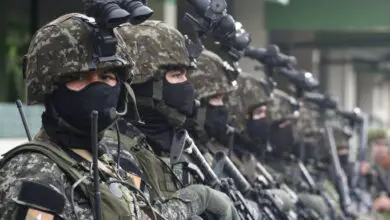
When Russia invaded Ukraine in early 2022, military and government pundits seemed certain Ukraine would be unable to stave off the numerically superior Russian military. What they didn’t consider were Ukrainian drones.
For the first time in the history of conflict, drones were fielded and accessible to nearly every soldier on the battlefield, and the effects have been remarkable. From scouting missions to artillery targeting and munitions deployment, drones have proven to be a radical force multiplier capable of impacting the course of a war.
Recent estimates suggest Ukraine is consuming over 10,000 drones a month. These drones cover the full spectrum of size, speed, and capability, but the vast majority are off-the-shelf models from a single company: Chinese drone manufacturer DJI.
China’s Drone Manufacturing Domination
Ukraine’s ingenuity in leveraging these systems is impressive, but it highlights the world’s overwhelming reliance on China as the dominant producer of drones.
DJI and Autel, both based in Shenzhen, produce over 90 percent of the world’s drones. Almost the entire drone industry is based in that city, from finished products to components.
China’s domination of drone manufacturing has been deliberately cultivated through aggressive government subsidies, direct investment, and strategic regulations to develop a domestic industry and gain a technological edge.
This government funding has also enabled DJI to engage in anti-competitive pricing tactics that contributed to the deaths of early US drone companies such as GoPro’s drone arm 3D Robotics and, most recently, Skydio’s consumer business.
This state-driven approach has made China the world’s drone factory and created a dangerous imbalance in the global supply chain. Beijing has near total control over a vital tool in both modern warfare and domestic use cases.

Bad Track Records
The United States cannot easily scale to produce the volumes of drones Ukraine is monthly consuming, let alone the numbers needed to supply its own armed forces if it wishes to adopt Ukrainian drone tactics.
Right now, the US could only outfit its military quickly by buying them from its largest strategic adversary. The risks involved from a data and supply chain security perspective are extreme — especially considering the track record of these companies.
DJI, named a “Chinese Military Company” by the Department of Defense, has been caught sending data back to China and hiding its Chinese government roots. The company has also been accused of limiting Ukrainian access to its drone tracking tools while empowering Russian forces and implementing a geofencing system that could be easily extended to limit US-based hardware.
China’s second-largest drone maker, Autel, doesn’t have a much better track record, rebranding its drones under the “Patriot” moniker before selling them to Russian forces.
US-Based Production Environment
In August, the Department of Defense announced the “Replicator Initiative,” an effort to buy thousands of aerial drones and other autonomous devices over the next two years. This is a great start, but the quantity of drones estimated to be produced as a result of the initiative would Ukraine only last a week.
For the US to keep up on this critical dual-use technology, the DoD must establish programs of record to procure hundreds of thousands of drones and invest in US-based manufacturing capacity.
In the current production environment, drones in the US are built by hand. In China, they are built by automated production lines, autonomously take off at the end of the line, fly through an obstacle course to ensure quality, and land in their box to be shipped to customers.
The US is optimistically five years behind its Chinese competitors. In addition to factories, investment must be directed towards certain underlying technologies. Custom silicon for drones massively affects performance, and Chinese high bandwidth, low latency mesh networking radios, flight computers, and thermal imagers aren’t matched by US alternatives in capability or cost.
The only solution is investment across the entire drone supply chain. Establishing US leadership in this space will be challenging, but now is the time to ensure the US can fight a drone war if it ever has to.
 Andrew Cote is BRINC Drones‘ Chief of Staff and former Deputy Assistant Secretary of Defense for Special Operations and Combating Terrorism.
Andrew Cote is BRINC Drones‘ Chief of Staff and former Deputy Assistant Secretary of Defense for Special Operations and Combating Terrorism.
Disclaimer: The views and opinions expressed here are those of the author and do not necessarily reflect the editorial position of The Defense Post.
The Defense Post aims to publish a wide range of high-quality opinion and analysis from a diverse array of people – do you want to send us yours? Click here to submit an op-ed.










